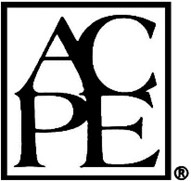Not All Anticoagulants are Created Equal, Dr. Kristi Kelley
In internal medicine resident clinics, there are a high percentage of patients with a diagnosis requiring treatment with an anticoagulant. The staff (nurse, pharmacy, social work, and physicians) works together with the patient to determine the best course of treatment to manage patients being treated with anticoagulant medications.
The pharmacy and nursing staff, along with the clinic’s social worker, frequently communicate with patients regarding their drug therapy. Since there are multiple options within the medication class of anticoagulation therapy, the focus of this presentation will be to differentiate between the agents as well as to increase the audience’s knowledge of the various agents. The following points will be discussed: mechanism of action, adverse drug reactions, monitoring parameters, route of administration, drug interactions, and clinical pearls.
James Lott and Lindsey Martin, 4th year Student Pharmacists at Auburn University HCOP, will be assisting with the development and delivery of this program.
Target Audience
Nurses and Social Workers
Learning Objectives
- Review general indications for anticoagulation therapy
- Discuss fundamental differences between each type of anticoagulation therapy
- Compare and contrast key characteristics of each type of anticoagulation therapy
- Identify patient counseling points for each type of anticoagulation therapy
 Auburn University is accredited by the Accreditation Council for Pharmacy Education as a provider of continuing pharmacy education; credits are recognized nationwide.
Auburn University is accredited by the Accreditation Council for Pharmacy Education as a provider of continuing pharmacy education; credits are recognized nationwide.
Available Credit
- 1.20 ABNAuburn University Harrison College of Pharmacy is a board-approved provider of continuing nursing education in Alabama by the Alabama Board of Nursing. Provider Number: ABNP1515
- 1.00 ABSWE

 Facebook
Facebook X
X LinkedIn
LinkedIn Forward
Forward